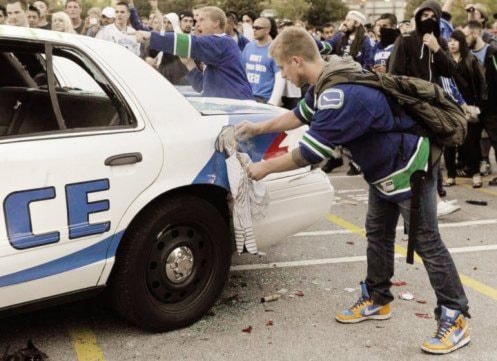Plans to broadcast court proceedings for those accused of participating in the Stanley Cup riot in June are being characterized as a political ploy by a Maple Ridge lawyer who represents one of the accused.
In Monday’s Throne Speech, the B.C. government announced it has asked Crown counsel to advocate for television cameras and radio-recording devices to be allowed in the courtrooms.
“When it comes to the Stanley Cup riots, those guys had no problem doing their crimes quite in public, with all kinds of people taking pictures and doing videos all around them, so I think they should have no problem being tried in public either,” Premier Christy Clark said in a news conference following the Throne Speech.
The criminal justice branch has said it would seek to comply with Clark’s request to broadcast proceedings, but decisions about cameras in a court room are made by the trial judge alone.
The premier’s promise, however, has a Maple Ridge lawyer, who represents Nathan Kotalyk, a water polo player caught on camera holding a flame to a shirt stuffed in the gas tank of a police car during the Stanley Cup riot on June 15, concerned. Kotalyk has since apologized in public, but been banned by Water Polo Canada from competing for his country for two years.
“The premier is doing nothing but grandstanding for the political benefit of her own party. And I’m a Liberal,” said Bart Findlay, of the law firm Findlay, Gunnell, Sandor.
He sees televising court proceedings as a trip down a slippery slope towards “the Americanization of our litigation system.”
“Frankly, I don’t like the way the Americans run their litigation,” said Findlay.
“You see the Crown and defence holding their own press conferences. What they are really trying to do is spin the facts rather than deal with the merits of the file. We don’t have that kind of drama.”
Findlay calls the plans for a public shaming “Elizabethan” – comparing it to punishment popular in the 16th and 17th centuries.
“This kind of public shaming went on in the Elizabethan era and crime was rampant,” said Findlay.
“In the Victorian era, they backed off and looked at rehabilitation and crime plummeted. Shaming doesn’t work.”
